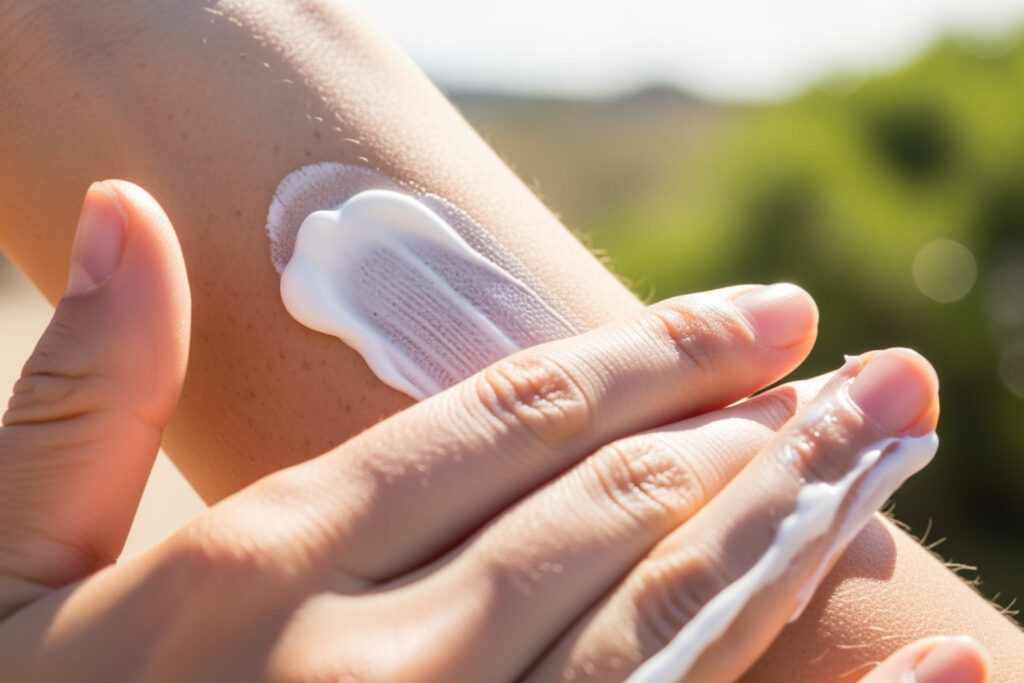Why Daily Sunscreen Use Is Essential for Your Skin Health
The importance of sunscreen goes far beyond preventing a painful sunburn during beach days. This simple daily habit serves as your skin’s most powerful defense against premature aging, skin cancer, and countless other forms of UV damage that accumulate over time.
Key Reasons Why Sunscreen Is Essential:
- Prevents skin cancer – Regular SPF 15+ use reduces squamous cell carcinoma risk by 40% and melanoma risk by 50%
- Stops premature aging – Blocks UV rays that break down collagen and elastin, preventing wrinkles and sun spots
- Maintains even skin tone – Prevents hyperpigmentation and reduces inflammation
- Protects daily – 80% of UV rays penetrate clouds, making year-round protection crucial
- Cumulative protection – Consistent use provides long-term benefits that compound over time
The statistics are sobering: one in five Americans will develop skin cancer by age 70. Yet studies show that simple daily sunscreen use can cut your melanoma risk in half. This isn’t just about vanity – it’s about preserving your health and maintaining your skin’s natural resilience.
For eco-conscious individuals seeking clean beauty solutions, understanding sunscreen becomes even more important. You need protection that works with your values while delivering real results.
The best part? You don’t need expensive treatments or complex routines. Consistent daily sunscreen application – even on cloudy days, even when you’re mostly indoors – creates a protective shield that your future self will thank you for.
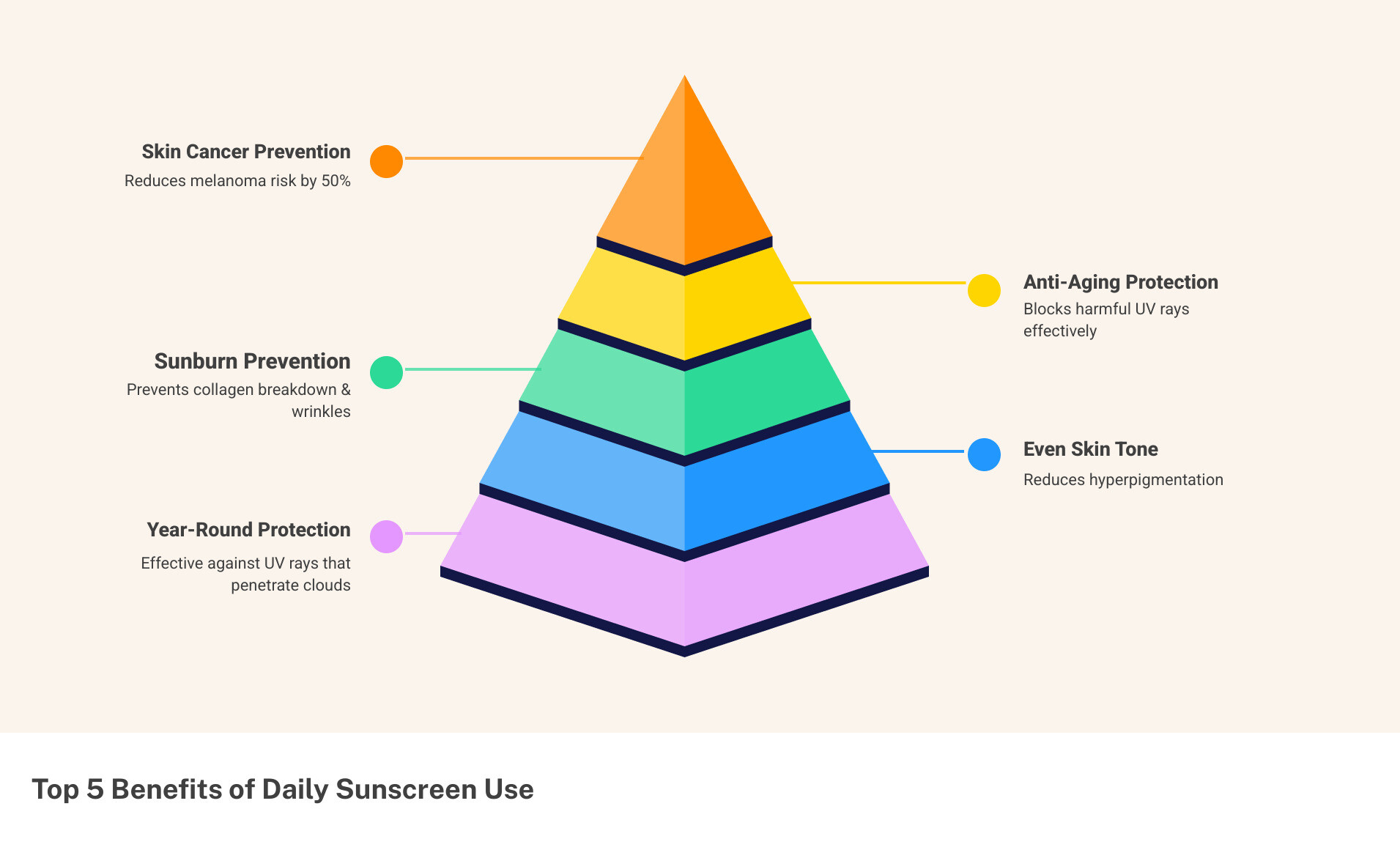
Key terms for Importance of sunscreen:
The Core Benefits: Why Sunscreen is Your Skin’s Best Friend
At Beyond Beauty Lab, we believe beauty stems from holistic wellness, which includes protecting our skin. The sun emits ultraviolet (UV) radiation that damages skin over time. Understanding this is key to appreciating the importance of sunscreen.
UV radiation comes in two forms: UVA rays, which cause aging and contribute to skin cancer, and UVB rays, which cause sunburns and are a primary cause of skin cancer. Both disrupt the skin barrier by breaking down essential proteins like collagen and elastin, diminishing skin resilience. Sunscreen acts as a shield to minimize this damage. This protection is crucial for your skin’s health and appearance, fitting into a larger picture of wellness, much like The Connection Between Gut Health and Glowing Skin.
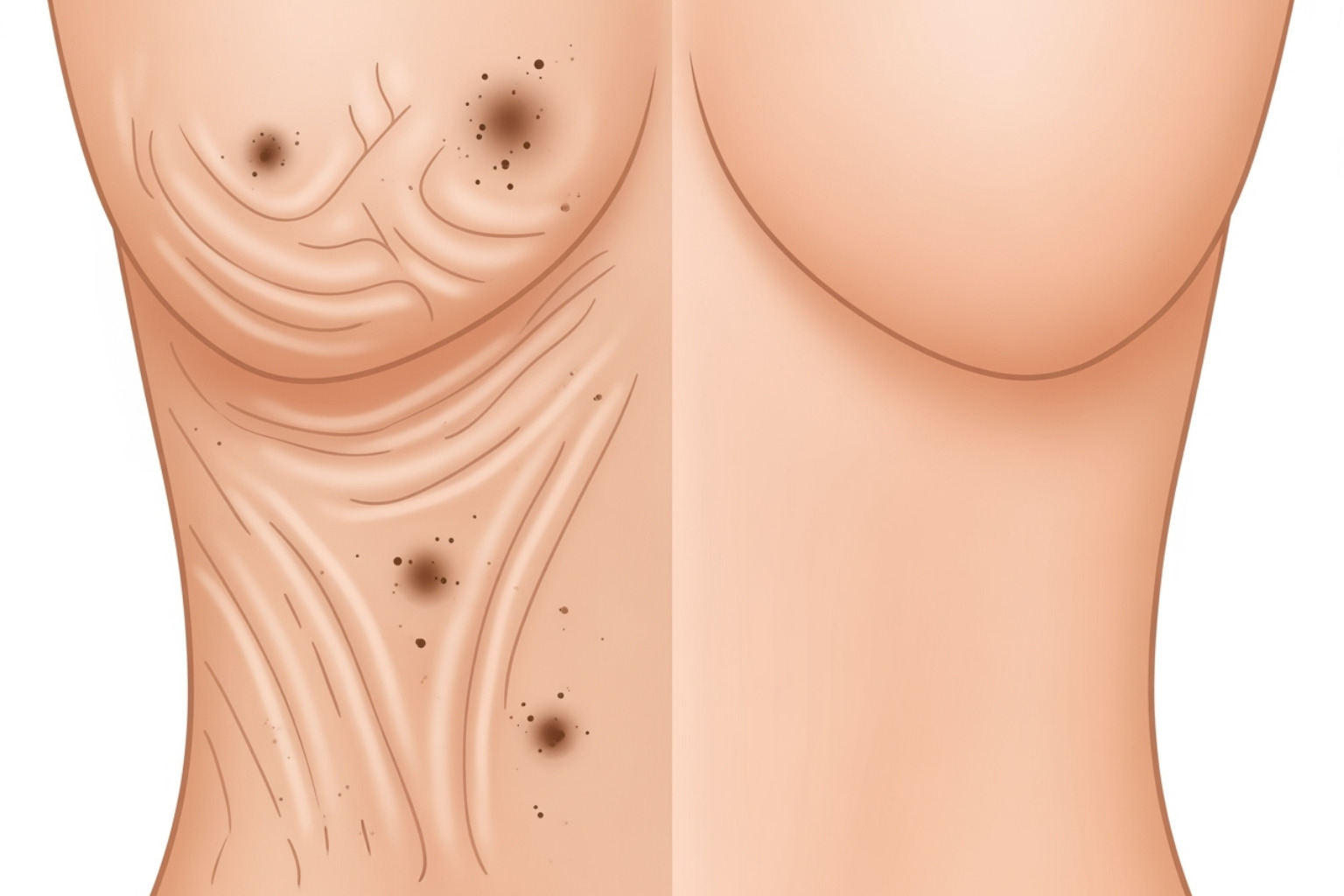
Prevents Premature Aging (Photoaging)
Photoaging, or premature aging from sun exposure, manifests as wrinkles, fine lines, a leathery texture, sun spots, and discoloration. Constant UV exposure breaks down collagen and elastin, and the damage is cumulative. Every unprotected minute in the sun adds up.
By consistently using sunscreen, we can significantly slow down this process, preserving our skin’s youthful texture and even tone. Think of it as an essential step in any regimen for Beauty Tips for Clear and Glowing Skin.
The Importance of Sunscreen in Reducing Skin Cancer Risk
This is arguably the most critical benefit. Skin cancer is the most commonly diagnosed cancer in the United States, and the statistics are stark: by age 70, one in five Americans will develop skin cancer.
The good news is that the importance of sunscreen in preventing skin cancer is backed by extensive research. Studies show that regular daily use of SPF 15+ sunscreen can reduce your risk of developing squamous cell carcinoma (SCC) by about 40 percent and lower your melanoma risk by 50 percent. This evidence strongly supports the efficacy of broad-spectrum sunscreen for preventing melanoma and other skin cancers. For a deeper dive, we encourage you to explore Scientific research on sunscreen and cancer prevention.
Maintains Even Skin Tone and Reduces Inflammation
Sun exposure can also lead to cosmetic concerns like hyperpigmentation, often appearing as “sun spots” or “liver spots.” Daily sunscreen helps prevent these discolored spots from forming.
Furthermore, UV rays cause painful redness and inflammation, which is particularly problematic for those with sensitive skin conditions like rosacea. By shielding skin from UV-induced inflammation, sunscreen contributes to a calmer, more even complexion. It’s a foundational step in our approach to Holistic Wellness: The Secret to Long-Lasting Beauty.
How to Choose the Right Sunscreen for You
Accepting the importance of sunscreen is the first step, but choosing one can be overwhelming. The best sunscreen is the one you’ll use consistently, so find one that fits your skin and lifestyle. Consider the product’s formulation, how it feels (“cosmetic elegance”), and whether it leaves a white cast. These factors ensure you’ll want to apply it daily. For those interested in Clean Beauty Tips, understanding the ingredients is key.
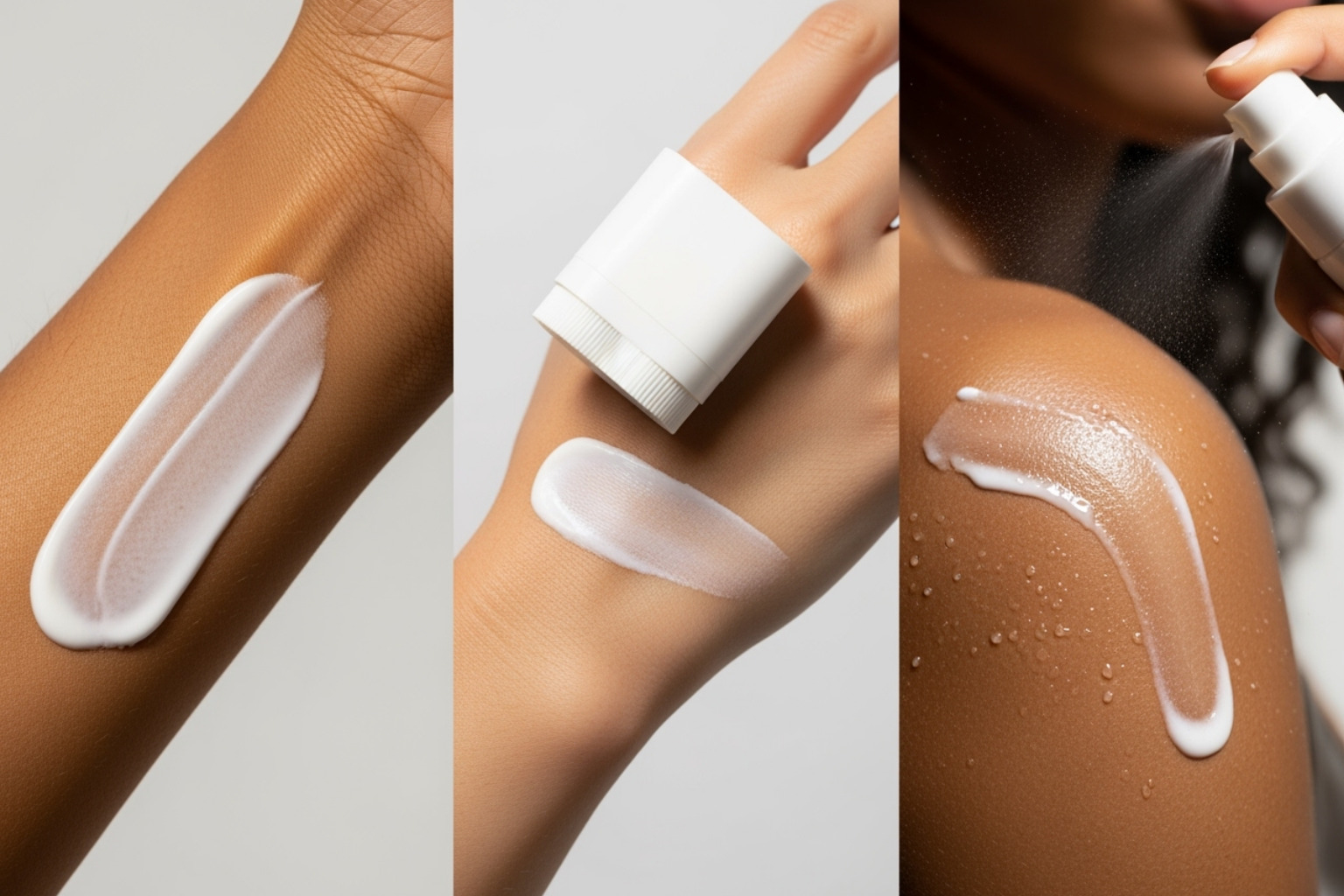
Mineral vs. Chemical Sunscreens: What’s the Difference?
Sunscreens work in two main ways based on their active ingredients. Knowing the difference helps you choose what’s best for your skin.
| Feature | Mineral (Physical) Sunscreens | Chemical Sunscreens |
|---|---|---|
| Active Ingredients | Zinc Oxide, Titanium Dioxide | Homosalate, Oxybenzone, Avobenzone, Octinoxate, Octisalate, Octocrylene, Ecamsule |
| Mechanism | Creates a physical barrier on the skin’s surface that reflects and scatters UV rays away. Acts like a shield. | Absorbs UV radiation as it penetrates the skin, then converts it into heat, which is released from the skin. Acts like a sponge. |
| Best For | Sensitive skin, children, those prone to irritation, immediate protection upon application. | Daily wear, swimming (often lighter texture, less visible on skin), can be easier to spread. |
| Potential White Cast | Can leave a visible white cast, especially on darker skin tones, though newer formulations are improving this. | Generally rubs in clear, less likely to leave a white cast. |
Mineral sunscreens are often best for children (over 6 months) and sensitive skin as they are less irritating. Chemical sunscreens are often lighter and blend in easily, making them popular for daily use. Some products mix both types for combined benefits.
Understanding the Importance of Sunscreen Labels (SPF & Broad-Spectrum)
When reading a sunscreen label, two key terms are SPF and “broad-spectrum.”
- SPF (Sun Protection Factor): This number indicates how much longer it takes for UVB rays (which cause sunburn) to redden skin. For daily use, we recommend an SPF of 30 or higher. An SPF 30 blocks about 97% of UVB rays, while SPF 50+ blocks about 98%. No sunscreen blocks 100% of UV rays.
- Broad-Spectrum Protection: This is crucial. It means the sunscreen shields you from both UVA (aging) and UVB (burning) rays. Without it, you’re only getting partial defense.
- Water-Resistant: This label indicates the sunscreen remains effective for either 40 or 80 minutes in water or while sweating. You must reapply after the stated time.
The Skin Cancer Foundation states the best sunscreen is one you’ll use, provided it’s safe, effective, broad-spectrum, and SPF 30 or higher. For more info, check out the Sunscreen FAQs from the AAD.
Finding the Perfect Formula for Your Skin Type
Finding a sunscreen that suits your unique skin type makes it easier to maintain a daily routine.
- Sensitive Skin: Mineral sunscreens (with zinc oxide and titanium dioxide) are often your best bet, as they’re gentler. Avoid sprays with alcohol, which can be irritating.
- Acne-Prone Skin: Look for “non-comedogenic” formulas that won’t clog pores. Lighter gel or fluid textures are often better than thick creams. Sunscreen is a key part of any routine for Skincare for Acne-Prone Skin.
- Oily Skin: Choose lightweight, matte-finish, or gel-based sunscreens that won’t add shine.
- Dry Skin: Look for creamier, hydrating formulas with ingredients like ceramides or hyaluronic acid for moisture.
- Tinted Sunscreen: These are great for richer skin tones. They contain iron oxides that prevent a white cast and also protect against visible light (VL), which can cause dark spots. Tinted formulas offer improved protection against hyperpigmentation.
The Art of Application: Getting the Most Out of Your Sunscreen
Knowing which sunscreen to choose is only half the battle. Applying it correctly and consistently is where the real magic happens. It’s an art form that, once mastered, becomes a seamless part of your daily wellness routine, much like Mindful Skincare Practices.
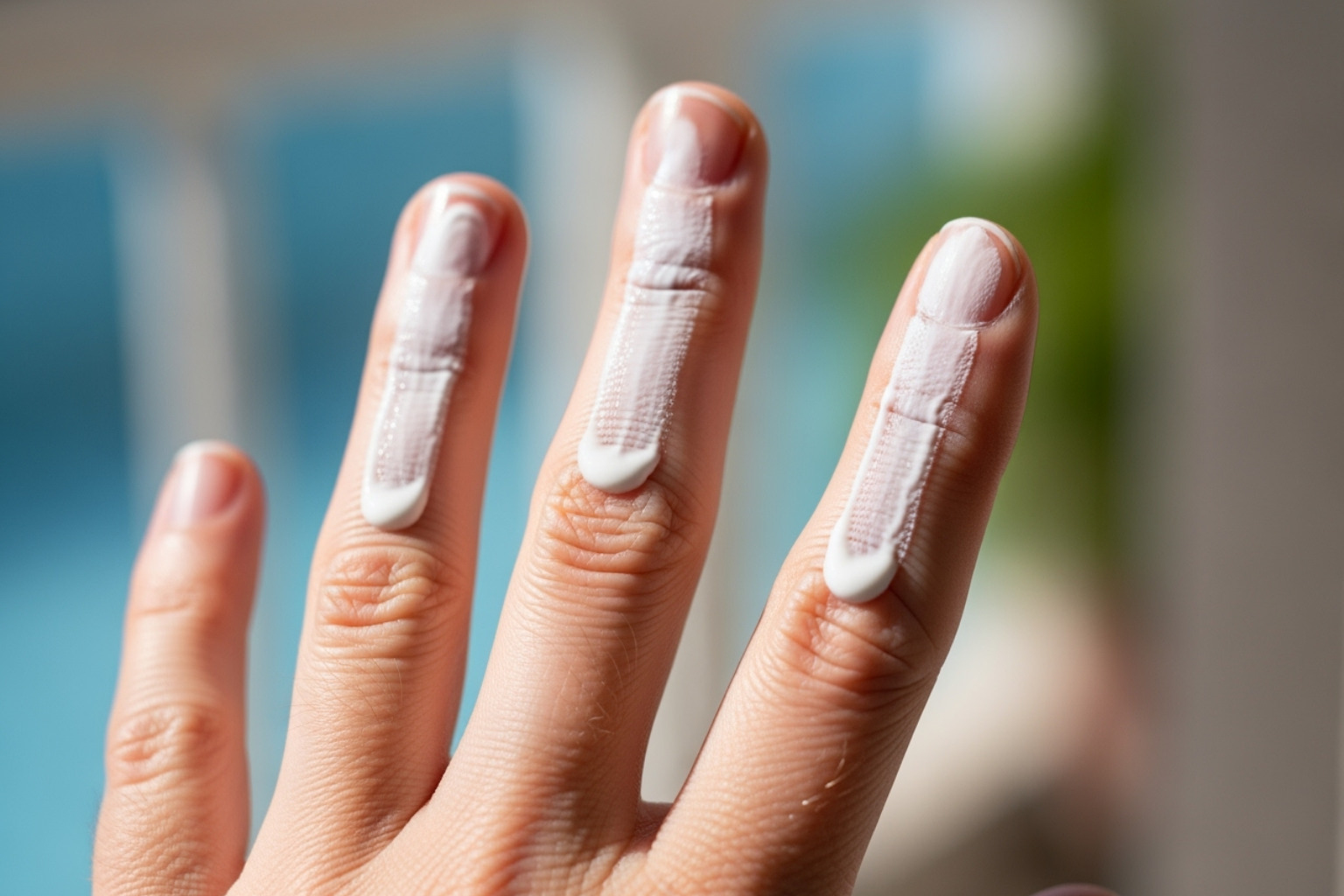
How Much to Apply and How Often to Reapply
This is where most of us fall short. The American Academy of Dermatology (AAD) states that most people only apply 25-50% of the recommended amount of sunscreen. This significantly reduces its effectiveness.
- How Much: For your entire body, you need about one ounce of product – roughly the amount that would fill a shot glass. For your face and neck alone, aim for about a half-teaspoon. A good trick for the face and neck is the “two-finger rule”: squeeze a line of sunscreen onto your index and middle fingers, from base to tip. This should be enough. Don’t forget often-missed areas like your ears, the back of your neck, your hands, and the tops of your feet!
- How Often: Sunscreen should be applied to all exposed skin at least 15 to 30 minutes before going outside to allow the product time to activate. Reapplication is just as important as the initial application. You should reapply sunscreen every 2 hours when outdoors, or immediately after getting the skin wet (like when swimming or sweating). Even if it’s overcast and cloudy, UV rays can still damage your skin, so reapply diligently.
Integrating Sunscreen into Your Skincare and Makeup Routine
Sunscreen should be the very last step in your morning skincare routine, applied after all your serums and moisturizers. This ensures it forms a protective layer on top of your skin. If you then apply makeup, wait a few minutes for the sunscreen to absorb before proceeding.
While makeup with SPF is convenient, it’s generally not enough to provide adequate protection. You would need to apply a much thicker layer of foundation or powder than you typically would to achieve the labeled SPF. So, while it offers a little extra boost, it shouldn’t replace your dedicated sunscreen. Think of it as an added bonus, not your primary defense. Understanding the correct order of application is key, as we discuss in How to Layer Skincare Products Correctly.
Sun Protection for All: A Complete Strategy
While the importance of sunscreen is clear, it’s just one part of a complete sun-protection strategy. A multi-faceted approach works best for the whole family.

A comprehensive approach includes seeking shade, especially during peak sun hours (10 a.m. to 2 p.m.). Wear protective clothing like lightweight, long-sleeved shirts and pants, preferably with a UPF (Ultraviolet Protection Factor) label. A wide-brimmed hat is essential for shading your face, ears, and neck, and UV-blocking sunglasses are crucial to protect your eyes.
Finally, avoid tanning beds entirely. They significantly increase your risk of skin cancer, with use before age 35 increasing melanoma risk by 75 percent. Sun rays reflect off surfaces like water, sand, and snow, so be extra vigilant in these environments.
Sun Safety for Babies, Children, and Teens
Children are especially vulnerable to the sun. Early sun exposure is a major risk factor for skin cancer later in life, and sunburns in childhood significantly increase this risk.
For infants under 6 months, the FDA recommends keeping them out of direct sunlight. Dress them in sun-protective clothing, keep them in the shade, and avoid sunscreen unless a doctor advises it. For children over six months, daily sunscreen is recommended. Mineral sunscreens are often the gentlest choice. Sunscreen is just one tool; also use protective clothing, hats, and sunglasses, and encourage seeking shade. Educating kids about sun safety is a vital investment in their health. For more tips, see our Natural Skincare Routine for Teenage Skin.
What to Do If You Get a Sunburn
Even with the best intentions, sunburns can happen. If you get one, here’s how to soothe your skin:
- Cool down with cool baths or showers.
- Moisturize gently with aloe vera or soy lotion. Avoid products with petroleum, benzocaine, or lidocaine, which can trap heat or cause irritation.
- Hydrate by drinking extra water.
- Take over-the-counter pain relievers like ibuprofen or acetaminophen for pain and swelling.
- Do not pop blisters, as they protect healing skin from infection.
- Stay out of the sun until the burn has fully healed.
While these steps ease discomfort, the damage is already done. Prevention is always better. This proactive approach is a core part of our philosophy on Beauty and Self Care.
Frequently Asked Questions About Daily Sunscreen Use
The importance of sunscreen is clear, but it’s natural to have questions. Let’s tackle some common concerns so you can feel confident in your sun protection routine.
Does sunscreen expire and how can I tell?
Yes, sunscreen has a shelf life. The FDA requires sunscreens to maintain their strength for at least three years. Most bottles have an expiration date printed on them. If not, write the purchase date on the container and toss it after three years. Sunscreen can also lose effectiveness if exposed to high heat. If you notice changes in color, consistency (chunky or watery), or smell, it’s time for a new tube, even if it’s not expired.
Are sunscreen ingredients like oxybenzone safe?
You may have seen concerns about certain sunscreen ingredients like oxybenzone. While the FDA has requested more data on some chemical filters, the scientific community agrees there is no conclusive evidence that these ingredients are harmful to humans at typical exposure levels. Studies on nanoparticles in mineral sunscreens show they do not penetrate the skin or enter the bloodstream. The bottom line from dermatologists is clear: the proven benefits of using sunscreen to prevent skin cancer far outweigh any unproven risks from its ingredients.
Will wearing sunscreen cause vitamin D deficiency?
This is a common question. While sunscreen blocks the UVB rays needed for vitamin D production, most people won’t become deficient from recommended use. This is because most people don’t apply enough sunscreen to block all UV rays, and we get incidental sun exposure daily.
A safer way to get vitamin D without risking sun damage is through diet (fatty fish, fortified milk) and oral supplements. The National Institutes of Health (NIH) has more information on this essential nutrient: Information on Vitamin D from the NIH. Don’t let vitamin D concerns stop you from using sunscreen, as the risks of unprotected sun exposure are far greater.
Conclusion
So, what’s the big takeaway from our journey into sun protection? It’s clear that the importance of sunscreen extends far beyond preventing a painful sunburn during beach days. It’s a foundational part of your daily wellness routine, a simple yet incredibly powerful tool in your self-care arsenal.
Think of it this way: sunscreen is your skin’s everyday superhero. It stands guard, offering unparalleled protection against the sneaky villains of skin cancer, premature aging, and all sorts of other UV damage that can accumulate over time. Whether you’re protecting tiny tots or nurturing your own vibrant glow, making consistent and correct sunscreen application a non-negotiable step is truly a gift to yourself and your loved ones.
Here at Beyond Beauty Lab, we’re all about empowering you with the knowledge to look and feel your best, inside and out. And that, dear friend, absolutely includes embracing the profound importance of sunscreen. Incorporating it into your daily routine isn’t just another step; it’s a powerful commitment to your skin’s future. It’s so much more than just avoiding a painful burn. It’s about proactively safeguarding your health, preserving your skin’s natural vitality, and embracing a holistic approach to beauty that puts your protection and well-being first.
Consistency is your skin’s best friend here. Keep up the good work, and trust us, your skin will send you thank-you notes for years to come! For even more insights on nurturing your well-being from every angle, explore The Ultimate Guide to Wellness and Well-being.

